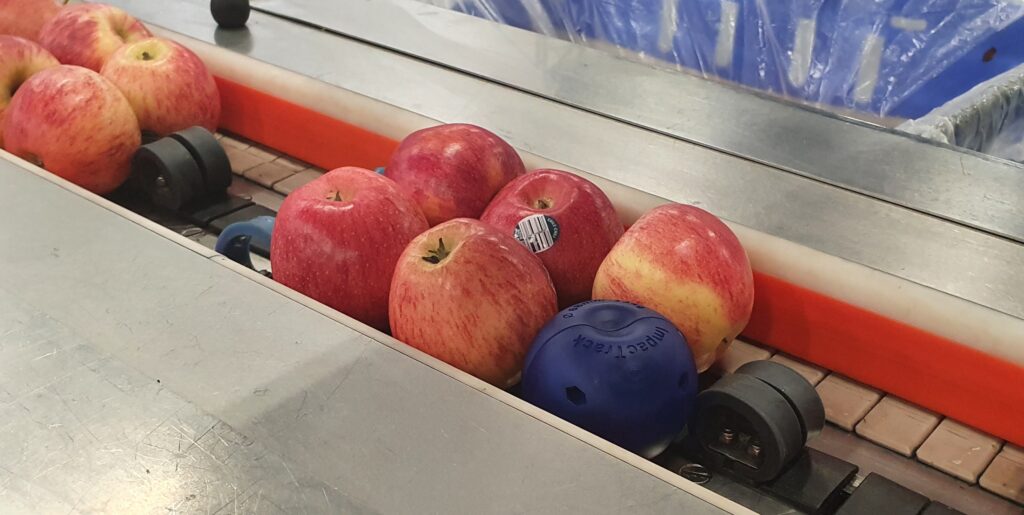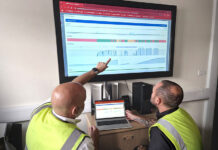BRILLOPAK has revealed it has devised a new way of using an electronic apple to improve development of its UniPAKer robotic crate packer for fresh produce.
By measuring the G-forces that an apple is subjected to during the crate packing process, the manufacturer explained this logging device has enabled its engineers to make design enhancements that will ‘minimise damage and bruising’ to delicate fruit.
The electronic apple is described as a shock and temperature logger encased in a carrier shell that mimics the shape, size and density of a real apple. The ‘dummy’ apple is inserted into a pack in place of a real apple to monitor and locate sources of damage during handling and transportation.
Brillopak has redesigned the UniPAKer’s reject system and optimised the picking and placing operation to reduce G-force stress on fruit.
On Brillopak’s UniPAKer lines, flow-wrapped or pillow packs of apples are usually passed through a vision or checkweighing system prior to entering the pick and place system, to check each pack contains the correct number of fruit and that no apples have been chopped up by the packaging machine. Reject packs are ejected and any good apples are reintroduced into the process.
The UniPAKer was using a reject system that pushed apples 90° off the side of the conveyor, down a chute. However, this was resulting in bruising, preventing reworking.
Brillopak explained that it ran tests which involved inserting the electronic apple into flow-wrapped packs and running the packs through the system to record G-force measurements. This revealed the existing system was causing the apple to be subjected to forces of up to 26G in places, but if that G-force could be reduced to less than 6G, there would be no damage to fruit.
The company designed a new ‘gentle’ reject system, which uses tangential force to guide rejected apples off the belt at an angle via a flexible polyurethane band mounted on an electronic servo motor controlled pusher.
Brillopak technical director Peter Newman explained, “The electronic apple allowed us to pinpoint where the maximum force was. Armed with that knowledge, we were able to redesign the system to reduce that force below the damage threshold. This is a major benefit to fresh produce packers, for whom waste as a result of bruising is a considerable and largely avoidable cost.”
Brillopak said the other operation on robotic apple packing systems that can be a ‘hotspot’ for damage is the pick and place system. Brillopak has developed a robot control system that has allowed it to optimise the acceleration/deceleration curve by enabling greater adjustability of parameters.
Peter added, “When lifting a pack of apples, the robot arm accelerates strongly upwards into a curve, then decelerates down into the crate, so the pack is tightly controlled as it reaches the bottom of the crate. Other packaging machinery manufacturers might be able to design a robotic system that picks and places apples into crates at high speeds, but what sets us apart is our ability to perform this task at high speed without bruising the product.”
By measuring the G-forces on the electronic apple during the pick and place process, Brillopak was able to verify the system’s ability to lift bags of apples and lower them into crates without subjecting them to force that would result in bruising.













